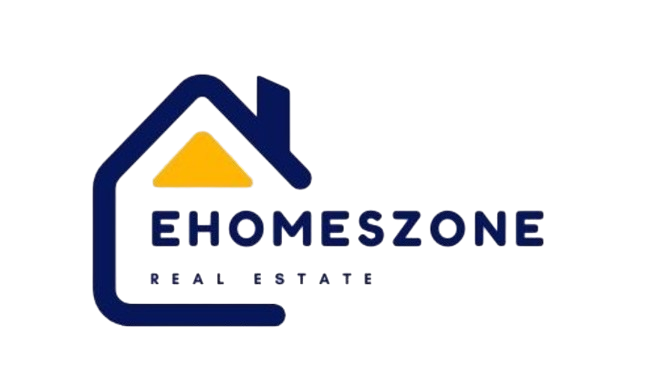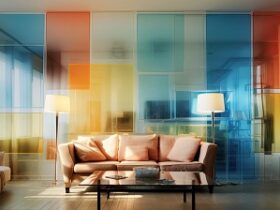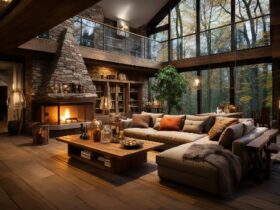When selecting the perfect flooring option, blanched laminate real wood flooring stands as one of the most elegant, durable, and aesthetically appealing choices available. Homeowners and designers alike are gravitating toward this versatile flooring option for a variety of reasons, ranging from its timeless look to its functional benefits. In this detailed article, we will explore the various aspects of blanched laminate real wood flooring, covering everything from its design features to installation tips and maintenance practices.
Pros and Cons of Blanched Laminate Real Wood Flooring
Blanched laminate real wood flooring has become a popular choice for homeowners due to its modern aesthetic and practicality. In this article, we’ll explore both the pros and cons of blanched laminate real wood flooring to help you make an informed decision for your next flooring project.
Pros of Blanched Laminate Real Wood Flooring
- Stylish and Modern Look
One of the most attractive features of blanched laminate flooring is its light, airy appearance. The blanching process creates a neutral, minimalist look that suits a wide variety of interior design styles, including contemporary, Scandinavian, and coastal. It brings a bright, open feel to any room, making it especially appealing for smaller or darker spaces.
- Affordable Alternative to Hardwood
Blanched laminate flooring is significantly more affordable than traditional hardwood, making it a great option for those on a budget. While providing a similar appearance to real wood, laminate is typically more cost-effective in both material and installation costs.
- Durable and Scratch-Resistant
Laminate flooring is built to last, featuring a tough surface layer that protects against scratches, dents, and stains. This durability makes it perfect for busy spaces and homes with kids or pets. Its resilience allows it to maintain its look and quality, even in areas with heavy foot traffic, making it a practical option for active households.
- Easy Installation
Blanched laminate real wood flooring often comes with a click-and-lock system, which makes installation straightforward and quick. Unlike solid hardwood, which requires nails and adhesives, laminate can be installed as a floating floor over existing subfloors. This makes it a great option for DIY enthusiasts or those looking to save on professional installation costs.
- Low Maintenance
Laminate flooring is known for being low maintenance. It doesn’t require the refinishing, polishing, or extensive cleaning that natural wood floors need. Regular sweeping and occasional mopping are enough to keep it looking fresh. It is also more resistant to moisture than traditional hardwood, making it less prone to warping or damage in humid environments.
- Eco-Friendly Options
Many laminate flooring manufacturers use recycled materials in the production process, making it a more eco-friendly choice compared to some other flooring options. Additionally, because laminate mimics the look of hardwood, it helps reduce the demand for natural wood, promoting sustainable practices in the flooring industry.
Cons of Blanched Laminate Real Wood Flooring
- Not Real Wood
While blanched laminate flooring can mimic the look of real wood, it is not made from solid wood. Some homeowners and designers prefer the authenticity and feel of natural wood flooring. Laminate does not offer the same warmth or texture as real wood, which may be a drawback for those who value the natural characteristics of hardwood.
- Limited Lifespan
Although laminate is durable, it does not have the same longevity as hardwood flooring. Over time, the wear layer on laminate can become scratched or worn down, and unlike solid wood, it cannot be refinished. Once the top layer is damaged, the entire floor may need to be replaced.
- Susceptibility to Moisture Damage
While laminate flooring is more moisture-resistant than natural wood, it is not completely waterproof. Excessive water exposure can cause the planks to swell or warp. This makes it less suitable for areas with high humidity or where water spills are frequent, such as bathrooms or basements.
- No Refinishing Options
Laminate flooring cannot be sanded or refinished like hardwood. Once it’s damaged or worn, such as a scratch or gouge, the affected section will likely need to be replaced. This limitation can be less convenient than hardwood, which can be refinished several times over its lifespan to restore its appearance.
- Limited Acoustic Qualities
Blanched laminate floors, especially if installed without proper underlayment, can sometimes produce a hollow sound when walked on. The lack of natural wood underfoot can also result in a colder or less cushioned feel, particularly in colder climates where real wood tends to offer a warmer, more insulating surface.
- Environmental Considerations
While many laminate floors are made with recycled materials, they also contain synthetic compounds, such as resins and adhesives. Some of these materials may emit volatile organic compounds (VOCs), which could impact indoor air quality. However, many modern laminate products are certified as low-VOC, so this is becoming less of a concern.
Choosing the Right Blanched Laminate Real Wood Flooring
When selecting blanched laminate flooring, there are several factors to consider to ensure you get the best product for your space.

Thickness and Durability
The thickness of the laminate flooring is a key indicator of its durability. Thicker planks, typically ranging from 8mm to 12mm, offer more stability and are better suited for areas with high foot traffic. Thicker planks also provide more comfort underfoot and can help reduce noise, making them an ideal choice for multi-story homes or apartments.
Wear Layer
The wear layer is the top protective coating on laminate floors, which protects against scratches, dents, and UV damage. For high-traffic areas or homes with pets, look for flooring with a highly durable wear layer to ensure long-lasting beauty.
Style and Finish
Blanched laminate real wood flooring comes in a variety of styles and finishes. Some options include distressed, hand-scraped, or smooth finishes, allowing you to choose the perfect texture for your space. Additionally, you can opt for wide planks to give your room a more expansive feel, or narrower planks for a more traditional appearance.
Installation Tips for Blanched Laminate Real Wood Flooring
While blanched laminate flooring is known for its ease of installation, following the correct steps can ensure a flawless finish.
Prepare the Subfloor
Before installing laminate flooring, it’s important to make sure that the subfloor is clean, dry, and level. Any imperfections in the subfloor can cause issues with the laminate, such as uneven wear or squeaking.
Acclimate the Flooring
Let the laminate planks adjust to the room’s temperature and humidity for a minimum of 48 hours before installing. This helps prevent the flooring from expanding or shrinking once it’s in place.
Leave Expansion Gaps
When installing laminate flooring, it’s crucial to leave expansion gaps around the perimeter of the room. This allows the flooring to expand and contract naturally with changes in temperature and humidity without buckling or warping.
Maintenance and Care Tips for Blanched Laminate Real Wood Flooring
To keep your blanched laminate flooring looking its best, it’s essential to follow these simple maintenance tips:
- Regular Cleaning: Frequent sweeping or vacuuming is essential to clear away dirt and debris that could potentially scratch the floor’s surface.
- Avoid Excess Moisture: While laminate is moisture-resistant, excessive water can cause damage. Use a damp mop rather than a soaking wet one, and avoid steam cleaners.
- Protective Pads: Use furniture pads under chair legs and heavy furniture to prevent scratches.
- Area Rugs: Placing area rugs in high-traffic areas can help reduce wear on the laminate.
FAQs Section
While traditional hardwood is made entirely of solid wood, blanched laminate real wood flooring features a top veneer of real wood combined with a laminate base. This makes it more affordable, easier to install, and more resistant to wear and moisture compared to solid hardwood.
While traditional laminate flooring isn’t fully waterproof, many newer products offer water-resistant or waterproof options. If you plan to install it in moisture-prone areas like kitchens or bathrooms, look for laminate with these water-resistant features to prevent damage.
Yes, blanched laminate real wood flooring closely mimics the appearance of real wood. The top layer is a real wood veneer, providing the natural grain and texture of wood, while the underlying laminate layers add durability.
Conclusion
Blanched laminate real wood flooring offers the perfect combination of style, durability, and affordability. Its light, neutral tones bring a fresh, modern look to any space, while the easy installation and low maintenance make it a practical choice for busy households. Whether you’re updating a single room or outfitting an entire home, blanched laminate real wood flooring is an investment that will enhance both the beauty and functionality of your space.










Find Us on Socials